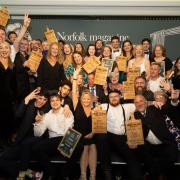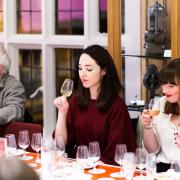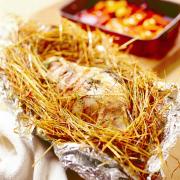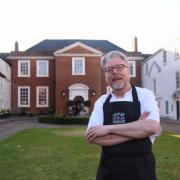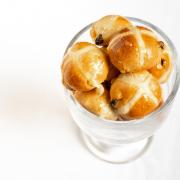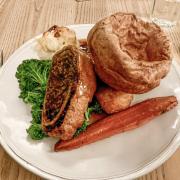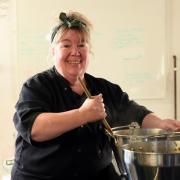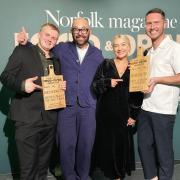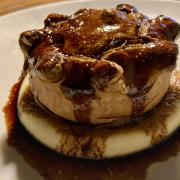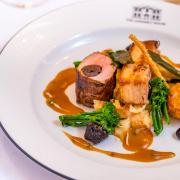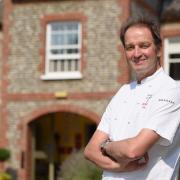Peach, pear, plum, quince, jostaberry and medlar too; we take a tour of our fruitful county

• Apples
In recent years communities across the county have been helping to keep Norfolk’s fruit heritage alive. Old orchards have been reinvigorated and new orchards established – to act as living libraries for historic varieties of fruit, as well as being providers of healthy food and pleasant places for a wander.
Fruitful places to look for native Norfolk apples include the orchards in villages such as Carbrooke, near Watton, Coltishall, North Burlingham near Acle and at County School Station, North Elmham, near Dereham. Cider has been produced on Norfolk farms, particularly in South Norfolk, for centuries. It was often used to pay for harvest labour and made using a mix of dessert and cooking apples, unlike ciders from the south west of England which use cider apples.
Around 20 types of dessert apples were either raised, or first discovered, in Norfolk. England’s first written mention of apples is in a document describing a 13th century Norfolk farmer paying his rent with 200 Pearmain apples and four hogsheads of Pearmain cider. Several types of apples appeared on the county’s great estates in the 19th century.

Norfolk apples include the Happisburgh, the Sandringham, the Norfolk royal russett, discovered growing in a garden in Burnham Overy Staithe in 1983, the Caroline, first grown in the Blickling Hall gardens in the 1820s, the Horsford prolific, and the Harling hero, first grown in a garden in East Harling, near Attleborough, in 1914,
Native Norfolk cooking apples include the Vicar of Beighton, found growing in Beighton, near Acle, the Hanworth Codlin which grew from a seedling in the gardens of Hanworth Rectory, near Aylsham, in the 1940s, the Norfolk Beefing or Biffin, and the Norfolk Beauty, raised by the head gardener of Gunton Park near North Walsham at the beginning of 1901.
• Blackberries
Abundant in hedgerows in late summer – but beware of picking them after September 29. Legend has it that when St Michael kicked Lucifer, aka the devil, out of heaven, the fallen angel fell on to a prickly blackberry bush. The devil cursed the fruit, scorched them with his fiery breath, stamped, spat, and even urinated on them, so they could not be eaten after St Michael’s Day, or Michaelmas, on September 29. You have been warned!
• Blueberries
Nine acre of blueberries are grown for supermarkets, independent shops and a summer pick-your-own business at Fairgreen Farms, Hill Road, Middleton, near King’s Lynn. The farm also makes its own blueberry wine. blueberrypicking.co.uk 079285 33846
• Cherries
Several types of cherry trees are native to Norfolk - developed at the John Innes Centre to resist common diseases. They include the Colney, the Merchant, and the Summer Sun.
• Medlars
Shakespeare was very rude about the medlar and the French name for the brownish fruit, which tastes bitter at first picking, compares it to a dog’s bottom. However, once softened in storage, medlars become sweet and can be eaten raw or made into delicious condiments. Medlars were originally brought to Britain by the Romans and are still prized for their spring blossom. Jane Steward of Eastgate Larder in Aylsham is leading a medlar revival. She and her husband, David, received a medlar tree as a wedding present – which became the first of an orchard of 100 medlars from which she makes medlar jelly and medlar fruit cheese. Now fellow medlar enthusiasts have given Jane their own fruit to use – and in return she donates to a charity they nominate.
• Pears
Norfolk has two native pear varieties – the flushed red robin, which has been grown in the county for centuries, and the Hacon’s incomparable, first recorded in the 19th century in a baker’s garden in Downham Market.
• Plums
East Anglian plum trees feature in the community orchard at Wood Norton, near Dereham.
Planted on the Pightle in the village in 2012 the orchard includes apples, pear, plum, cherry and gage trees native to Norfolk or East Anglia. Plums, along with greengages, pears and Norfolk apples, also feature in Drove Orchards, Thornham, on the north Norfolk coast – originally planted in the 1950s by Major David Jamieson, who won the Victorian Cross for his part in the Normandy landings. Today Drove Orchards also grows more than 160 types of apple – 120 of which are East Anglian heritage varieties.
• Quince
The golden yellow fruit looks quite like pears. Native to east Asia, they were first recorded in England in the gardens of the Tower of London around 1275. Here in Norfolk they grow at the Hillfield Nursery and Farm Shop in Thorpe-next-Haddiscoe. The nursery also grows a huge range of other orchard and soft fruit, including some less common varieties such as tayberries (a cross between a blackberry and raspberry), Worcesterberries (a kind of gooseberry), jostaberries (related to blackcurrants) and sunberries (also known as huckleberries and wonderberries.) hillfieldnursery.co.uk 01508 548 306
• Rhubarb
A new variety of rhubarb was launched in Norfolk this summer. Pink Blossom, bred by Hargreaves Plants of Hillington, near King’s Lynn, has, unsurprisingly, pink blossom, and then stalks said to be so sweet people are even eating them raw.
• Strawberries
– and raspberries, blackberries, blackcurrants, cherries, damsons, gooseberries, plums, rhubarb and more.
Place UK, based at Tunstead, near Wroxham, is the UK’s largest producer of individually quick frozen fruit. They supply major supermarkets across Britain and last year were named Soft Fruit Grower of the Year at the UK Grower Awards.
Core interests
The East of England Apples and Orchards Project is a not-for-profit-company working to ensure the future of local orchards. It gives schools free local fruit trees, grows and sells 220 varieties of heritage local apples, pears, plums and cherries, supports Apple Day events across the region and even discovers ‘lost’ fruits.
For lots of Norfolk apple fun, visit Apple Day at Norfolk Rural Life Museum, Gressenhall, on Sunday, October 14, 10am-5pm. Its orchard, on the site of the former workhouse orchard, has a comprehensive collection of native Norfolk fruit.




